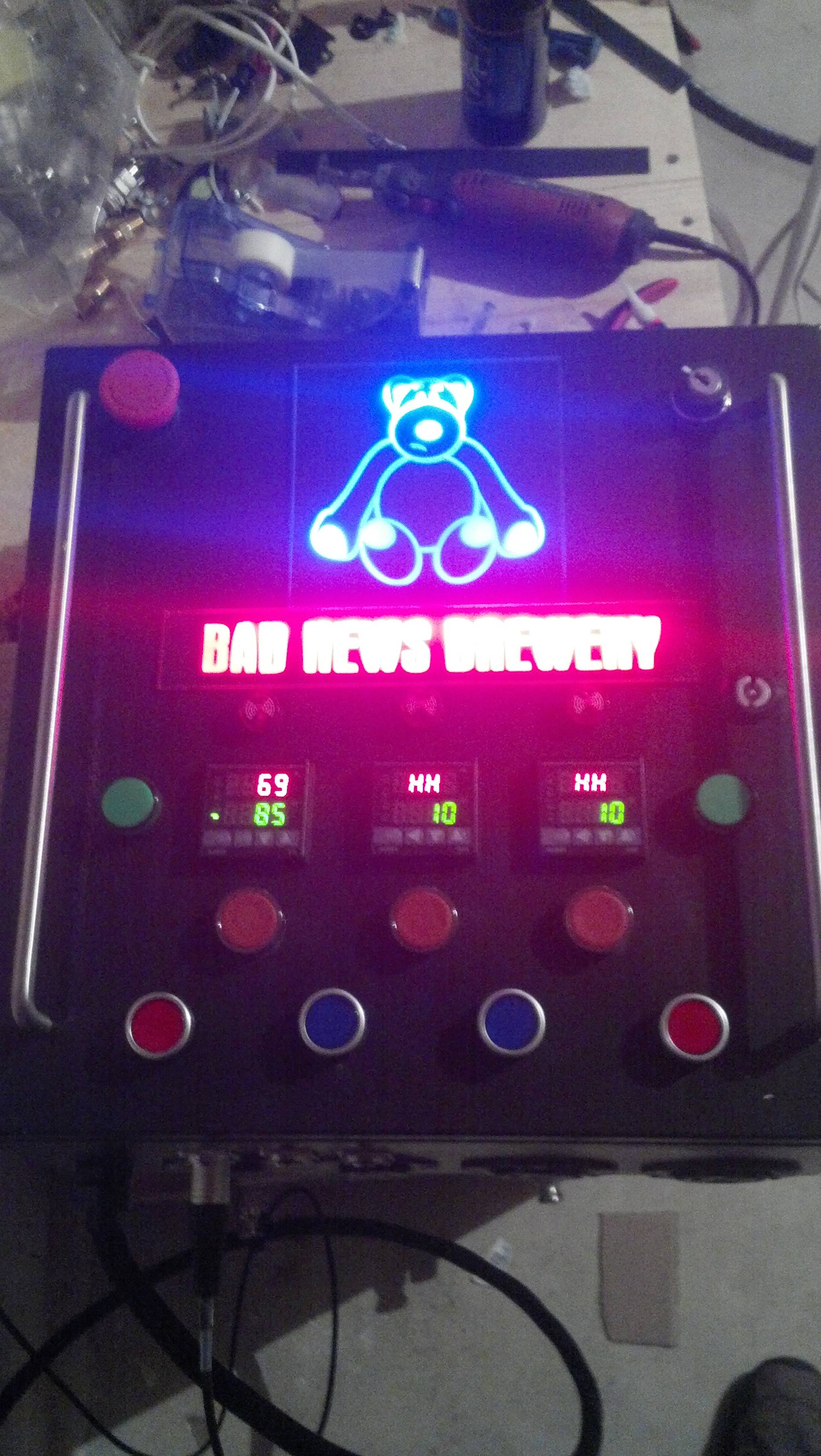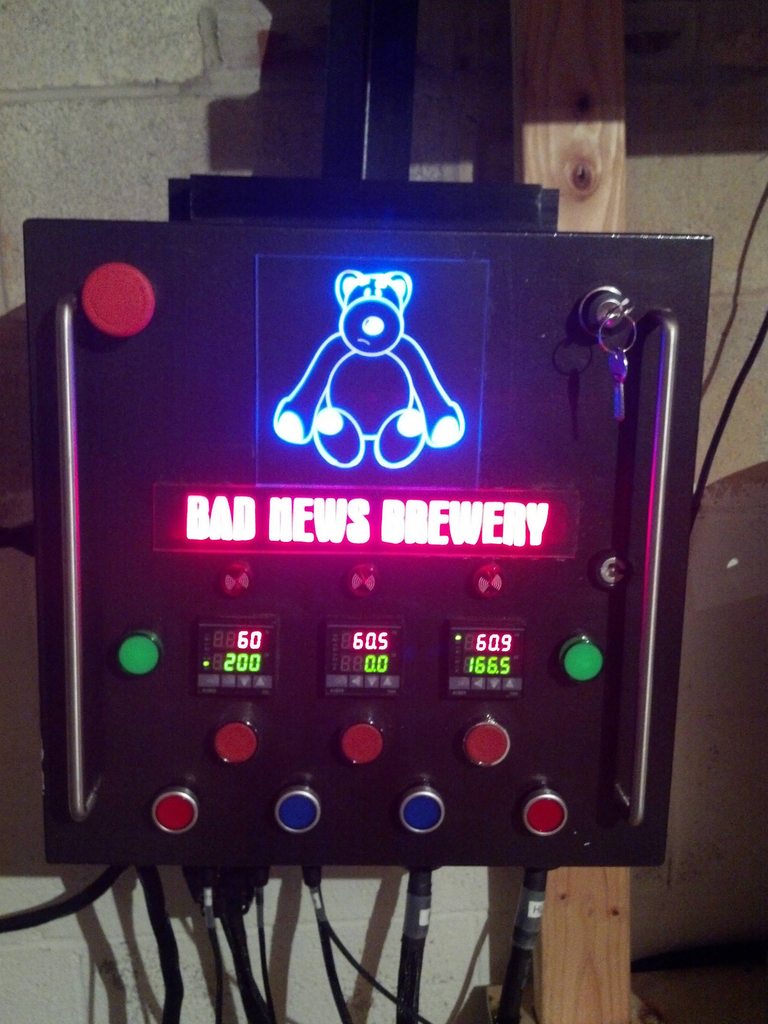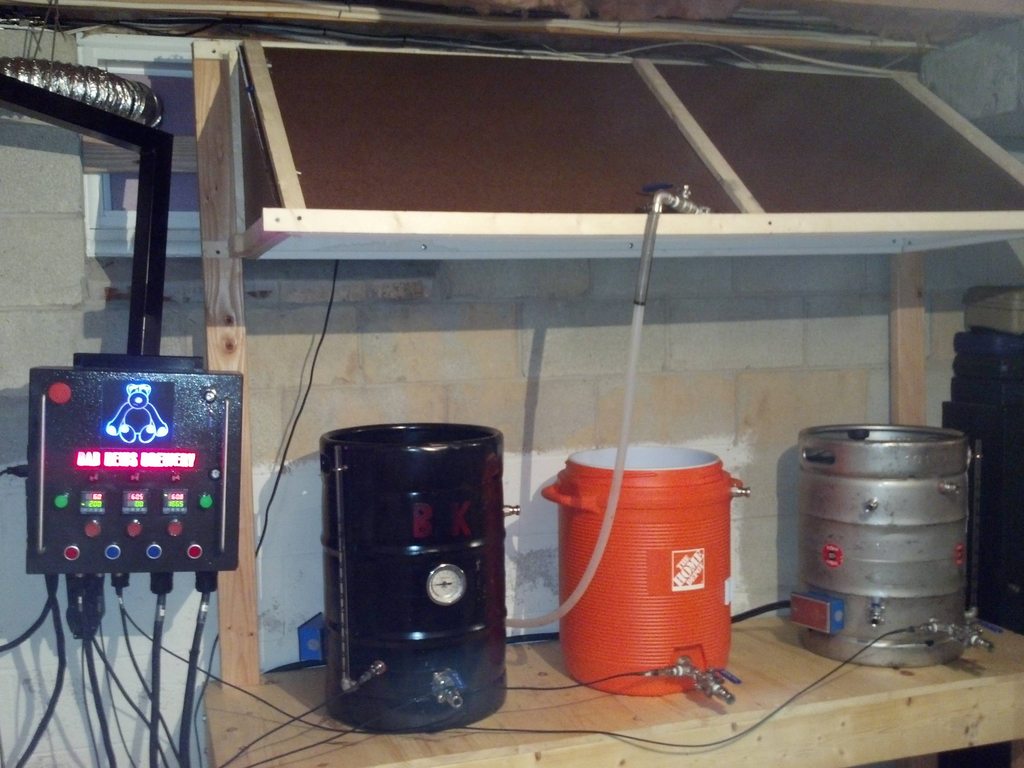Alright, so I am a bad HBT thread starter / OP and have waited too long to reply... but I'm back.
Here is a picture of the panel in its final glory, everything plugged in, powered up and ready to start brewing. None of the bottom switches are on, and nothing's labeled, but here's how it goes:
PIDs (left to right) - Boil Kettle, Mash Tun (temp monitor only), HLT. The green LEDs next to the BK and HLT PID turn on when the PID has the element fired, so they pulse during the brew day. Not a critical component, but a nice to have.
Red switches below the PIDS - they are momentary switches interfaced with the alarm circuit. The PID to the left is a 2352, the so if the alarm buzzer starts to go off, I can depress the switch to break connection (and shut up the buzzer) while I adjust the alarm condition within the PID. Basically just lets me silence the alarm. The other two PIDs are 2451s, which have a timer integrated. The switches were supposed to be part of the timer circuit, to start or reset a timer. I can honestly say I have not yet found the need / desire / time to figure out the timer function of those PIDs, so it was basically a waste to buy them vs. the 2352s, and those two switches do nothing.
The 4 switches across the bottom or LED on/off switches. From left to right - BK element, Pump 1 (Wort), Pump 2 (H2O), and HLT element. Red for heat, blue for water. These switches also have a second terminal block across the back for the safe-start interlock. All 4 switches have to be off before the panel will turn on.
And here is everything set up. I made a quick and dirty hood with some laminate and 2x2s. I use an old, big ass 120v computer fan as the exhaust fan. It doesn't put out nearly enough CFM compared to some of the other fans, but for the cost of $0 and the quick mount up, I'm happy.
The hose sitting on the hood comes from the filter, and is my H2O fill line.
So that's pretty much everything. Works like a champ. When I do everything right I'm getting mash efficencies above 90% (according to BeerSmith 2.0) and overall efficencies in the mid to high 80s. Most importantly, it turns water and grain into drinkable beer (with the help of some yeast) and for that I am happy.
-Kevin























![Craft A Brew - Safale S-04 Dry Yeast - Fermentis - English Ale Dry Yeast - For English and American Ales and Hard Apple Ciders - Ingredients for Home Brewing - Beer Making Supplies - [1 Pack]](https://m.media-amazon.com/images/I/41fVGNh6JfL._SL500_.jpg)





























